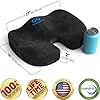Table of Contents
If you’ve ever frantically fished your car keys out of a puddle or watched them disappear into a swimming pool, you’ve likely asked the pressing question: are car key fobs waterproof? The straightforward answer is no – most key fobs are not fully waterproof, but many offer varying degrees of water resistance that can withstand minor splashes and brief rain showers. Understanding the distinction between waterproof and water-resistant is crucial for every modern vehicle owner, as the electronic components inside these sophisticated devices are highly vulnerable to moisture damage. This comprehensive guide will explore the reality of key fob water resistance, immediate steps to save a wet key fob, and practical strategies to protect your automotive investment from water-related disasters.
Understanding Key Fob Water Resistance Technology
Modern key fobs are marvels of miniaturized engineering, packing complex electronics into compact, handheld devices. To understand their vulnerability to water, we must first examine what’s inside these essential automotive accessories.
Key fobs are essentially compact computers that communicate with your vehicle using radio frequency (RF) technology . They transmit encrypted signals that enable features like remote locking, engine start, and personalized settings. This intricate technology contains circuit boards, buttons with electrical contacts, batteries, and in many cases, transponder chips that must communicate with your car’s immobilizer system .
The manufacturing standards for key fobs vary significantly between automakers and models . Some manufacturers incorporate basic seals or protective casings to shield electronic components from moisture, while others may offer more enhanced protection, particularly in luxury vehicle lines . However, these protections are primarily designed for accidental splashes rather than submersion.
It’s crucial to understand the fundamental distinction between the terms “waterproof” and “water-resistant” as they’re often mistakenly used interchangeably . Waterproof indicates that a device can be submerged in water indefinitely without damage, while water-resistant means it can withstand splashes or brief exposure to water but not submersion . The vast majority of key fobs fall into the water-resistant category, if they offer any protection at all.
Are Car Key Fobs Waterproof? The Reality Check
When evaluating the water protection of your key fob, several factors come into play that determine its survival chances when exposed to moisture.
The Manufacturer’s Perspective
Globally, no universal standard governs the water resistance of key fobs . Manufacturers typically follow internal guidelines or industry best practices rather than specific waterproofing certifications commonly found in watches or smartphones. Some luxury brands like BMW and Mercedes-Benz have introduced key fob models with enhanced protection, but even these devices aren’t guaranteed to survive complete immersion .
The variation in manufacturing standards means that a key fob from one automaker might withstand a brief downpour, while another could malfunction from a few drops of water. This inconsistency underscores the importance of checking the specifications of your specific key fob model and erring on the side of caution with all key fobs.
What Level of Water Exposure Can Key Fobs Typically Withstand?
Most key fobs can typically handle minor water exposure such as:
- Light rain during entry/exit from vehicles
- Accidental splashes from puddles
- Occasional exposure to snow
- High humidity environments
However, they generally cannot survive:
- Complete submersion in water (even briefly)
- Exposure to pressurized water
- Prolonged exposure to heavy rain
- Being left in wet clothing
- Accidental washing machine cycles
The duration of exposure matters significantly. A quick retrieval from water offers much better survival odds than prolonged immersion.
The Type of Water Matters
The composition of the water your key fob encounters significantly impacts the potential damage :
Freshwater: Least damaging, though still potentially destructive to electronics. If promptly addressed, freshwater exposure has the best recovery rate.
Saltwater: Particularly harmful as it causes corrosion to electronic components quickly . The conductive properties of saltwater can create short circuits, and the salt crystals continue to cause damage even after drying.
Chlorinated Water: The chemicals in pools can accelerate corrosion and potentially damage plastic components and seals .
Soapy Water: Detergents can leave residues that interfere with electronic connections and potentially create conductive pathways .
Table: Key Fob Water Resistance Capabilities by Brand
What Happens When a Key Fob Gets Wet?
Understanding the potential damage scenarios helps emphasize the importance of protecting your key fob from moisture.
Immediate Effects of Water Exposure
When water penetrates a key fob’s housing, several immediate issues can occur:
Short Circuits: Water can create unintended connections between circuit board pathways, causing erratic behavior or complete failure . This might manifest as buttons activating randomly or the fob becoming completely unresponsive.
Corrosion Begins: The corrosion process starts almost immediately, especially with saltwater exposure . This electrochemical process eats away at metal components and connections, often causing permanent damage before visible signs appear.
Button Malfunctions: Moisture can interfere with the electrical contacts beneath buttons, making them unresponsive or stuck in a “pressed” state.
Long-Term Consequences of Water Damage
Even if a key fob appears to work after drying, latent issues may develop over time:
Progressive Corrosion: Corrosion continues to spread across circuit boards, eventually causing intermittent failures or complete malfunction days or weeks after the initial exposure .
Component Degradation: Microscopic mineral deposits from water can create resistive paths on circuit boards, gradually degrading performance until the fob fails.
Weakened Seals: If water entered the fob, protective seals may have been compromised, making the device more vulnerable to future humidity or minor splashes.
Emergency Response: What to Do When Your Key Fob Gets Wet
Quick, appropriate action significantly increases the chances of saving a water-exposed key fob. Follow these steps methodically.
Immediate First Steps
Remove from Water Immediately: Every second counts. Retrieve the key fob from water as quickly as possible to minimize water penetration .
Power Down: If possible, open the key fob casing and remove the battery immediately . This prevents short circuits that can cause further damage to the electronic components.
External Drying: Use a soft, absorbent cloth or paper towel to gently dry the exterior, paying special attention to seams and buttons . Avoid shaking the fob, as this can spread water to deeper components.
Advanced Drying Techniques
Disassemble if Possible: If you’re comfortable doing so, carefully open the key fob according to manufacturer instructions to allow better air circulation to internal components .
Absorb Moisture: Place the disassembled key fob in a container with a desiccant like silica gel packets, which are more effective than rice for moisture absorption . If using rice, ensure completely submerged in uncooked rice for 24-48 hours.
Air Dry Thoroughly: Allow the key fob to air dry completely before reassembly and testing . This process may take 24-48 hours depending on humidity levels.
What to Avoid
No Heat Sources: Avoid using hair dryers, ovens, or microwaves as excessive heat can warp plastic components and damage sensitive electronics .
Don’t Reassemble Early: Never reassemble or test the key fob until you’re certain it’s completely dry, as powering a damp circuit board can cause short circuits.
Avoid Button Pressing: Refrain from pressing buttons while the fob is wet, as this can force water deeper into the device or create short circuits.
Testing and Recovery After Water Exposure
Once you’re confident the key fob is completely dry, follow these steps to assess functionality.
Systematic Testing Process
Reassemble Carefully: Once completely dry, reassemble the key fob, ensuring all components are properly seated and the battery is correctly installed.
Test Basic Functions: Start with basic functions like locking and unlocking doors from a short distance from your vehicle.
Check All Buttons: Test every button on the fob to ensure each works properly and doesn’t stick or respond erratically.
Range Test: Check if the fob works at the expected distance from your vehicle. Significantly reduced range may indicate residual damage.
When Professional Help Is Needed
Persistent Malfunctions: If buttons remain unresponsive or behave erratically after thorough drying, professional repair or replacement may be necessary .
Physical Damage Signs: Visible corrosion, water indicators (if present), or mineral deposits on the circuit board typically require professional attention.
Programming Issues: If the fob needs reprogramming after water exposure, this often requires dealership or automotive locksmith services .
Prevention Strategies: Protecting Your Key Fob from Water Damage
Proactive protection measures can prevent the stress and expense of water-damaged key fobs.
Protective Accessories
Waterproof Cases: Invest in a quality waterproof key fob cover or case made from silicone or hard plastic . These accessories provide an additional layer of protection against moisture.
Specialized Containers: For extreme water exposure scenarios like beach trips or water sports, consider a dedicated waterproof container like the DRYFOB, which is specifically designed to protect key fobs even during scuba diving .
Protective Wraps: Simple silicone skins offer basic protection against splashes and light rain while maintaining the fob’s slim profile.
Mindful Handling Habits
Awareness of Surroundings: Be particularly cautious with your key fob near bodies of water, swimming pools, bathrooms, and in heavy rain.
Proper Storage: Avoid placing key fobs in pockets that may contain liquids or where they might be exposed to leaking water bottles . Establish a designated dry storage area at home.
Weather Considerations: During rainy weather, minimize the time your key fob spends exposed to the elements when entering and exiting your vehicle.
Backup Planning
Spare Key Fob: Always maintain a properly programmed spare key fob stored in a secure, dry location . This provides peace of mind and temporary access if your primary fob is damaged.
Traditional Key Awareness: Familiarize yourself with any physical key hidden within your key fob for manual door access in emergencies.
Service Contacts: Keep contact information for reputable automotive locksmiths or your dealership readily available in case of key fob emergencies.
The Future of Key Fob Water Protection
As technology evolves, so does the potential for more water-resistant key fob solutions.
Manufacturing Improvements
Automotive manufacturers are exploring advanced materials and sealing techniques to create more durable key fobs . The growing consumer demand for greater durability, particularly in regions with high humidity or frequent rainfall, drives these innovations.
Some manufacturers are experimenting with conformal coatings on circuit boards, improved gasket materials, and ultrasonic welding of cases to enhance water resistance without increasing size.
Alternative Technologies
Smartphone Integration: The rise of smartphone-based digital keys may eventually reduce reliance on physical fobs, potentially eliminating water damage concerns for some users .
Biometric Access: Future vehicles may incorporate fingerprint or facial recognition systems that eliminate the need for physical keys altogether .
Enhanced Materials: Development of hydrophobic coatings and nano-sealing technologies could provide better protection while maintaining the compact form factor users prefer.
Conclusion: Navigating Key Fob Water Resistance Realistically
So, are car key fobs waterproof? The definitive answer remains that most key fobs are water-resistant at best, not waterproof. While they may survive accidental splashes or brief rain exposure, submersion typically results in damage that requires professional intervention or replacement.
The practical approach for vehicle owners is to treat all key fobs as water-vulnerable devices worthy of protection. Implement preventive measures like waterproof cases, develop careful handling habits, and maintain backup access options. When accidents happen, respond immediately with proper drying techniques to maximize recovery chances.
As automotive technology continues to evolve, we can expect more robust key fob designs and alternative access technologies that may eventually render water damage concerns obsolete. Until then, a combination of knowledge, preparation, and quick response offers the best strategy for preserving these essential—and expensive—modern automotive accessories.











































